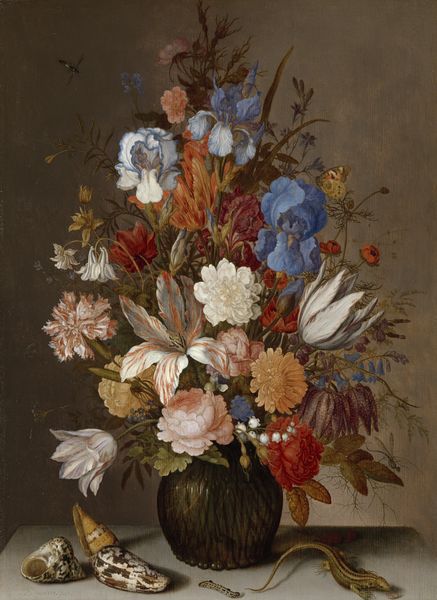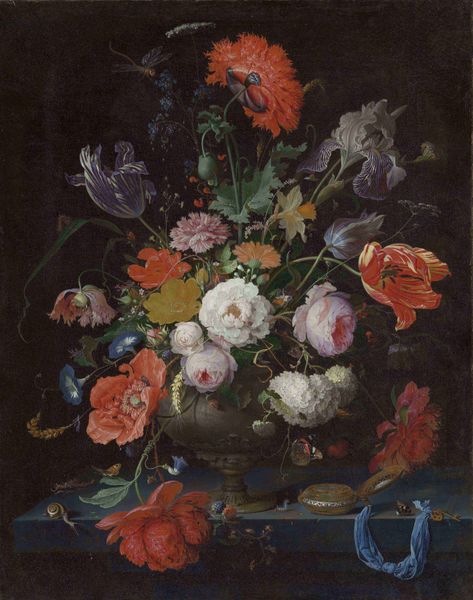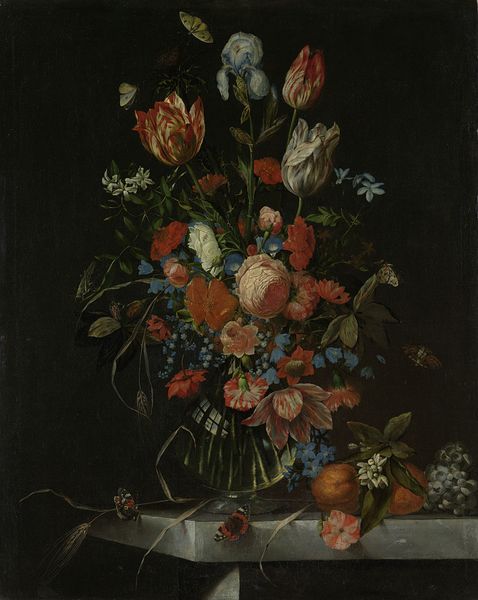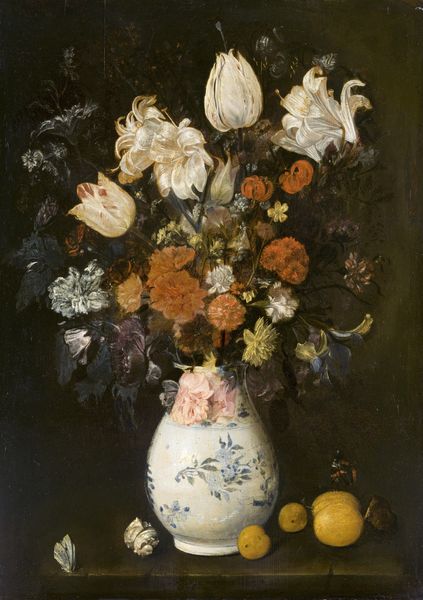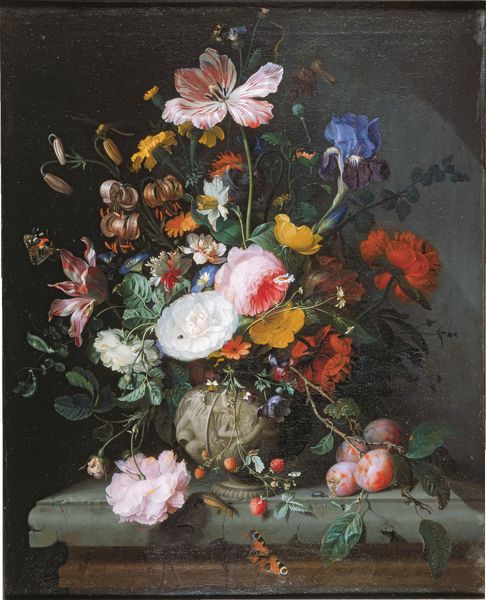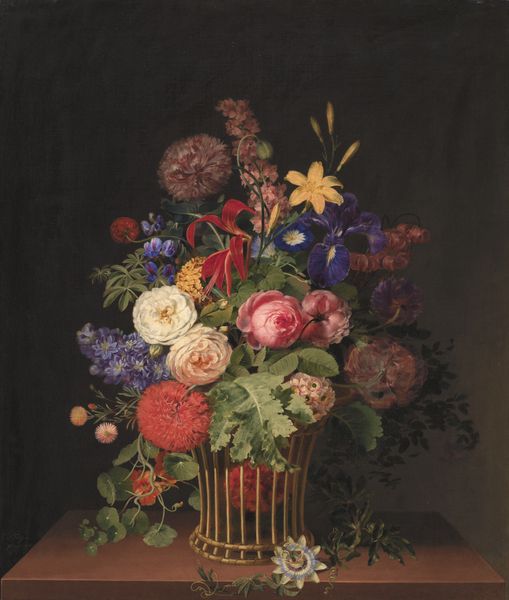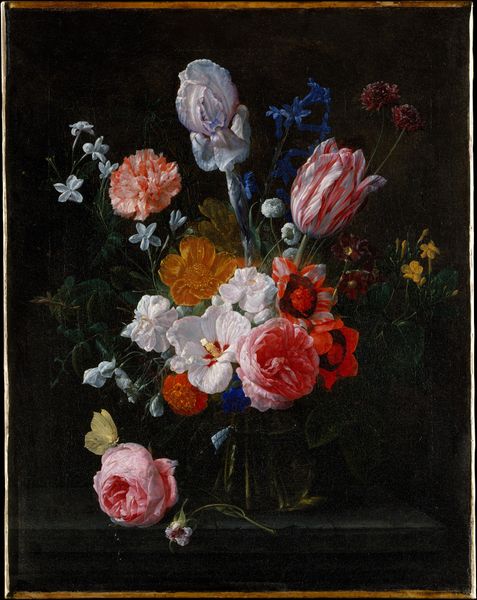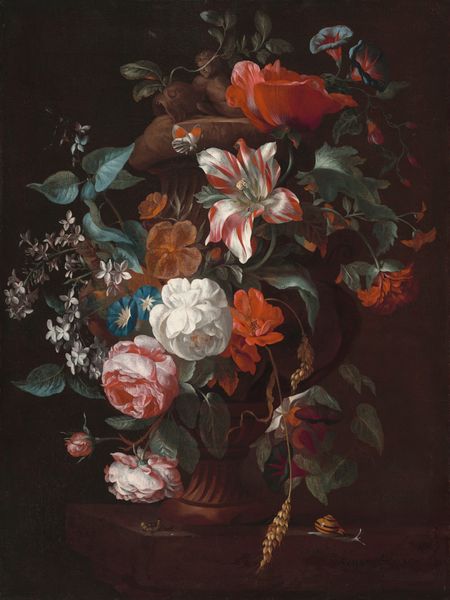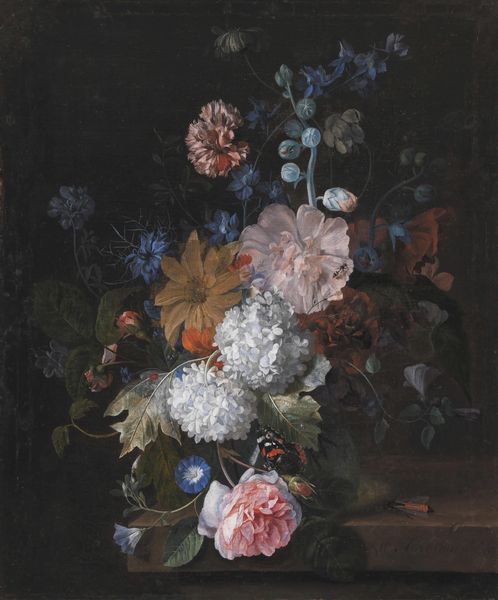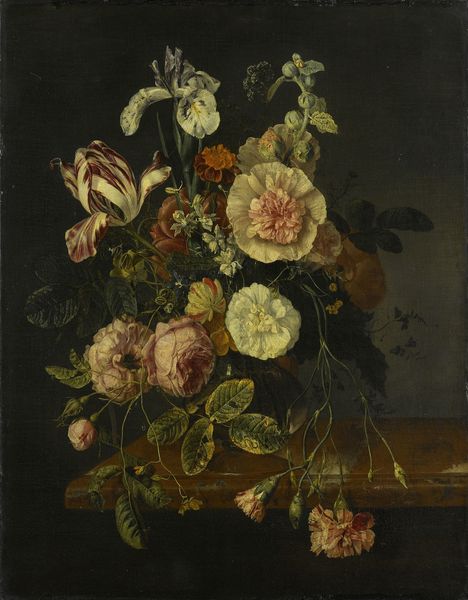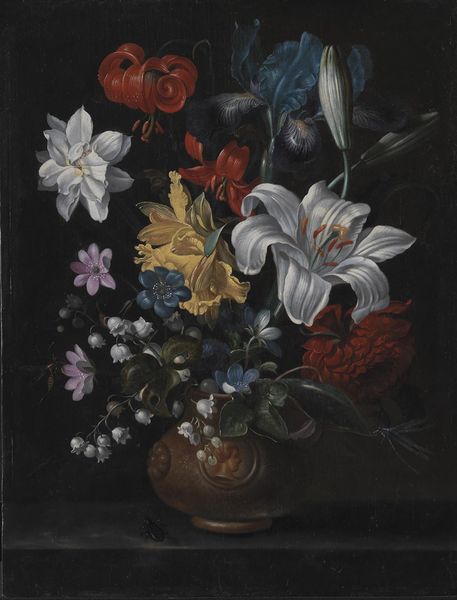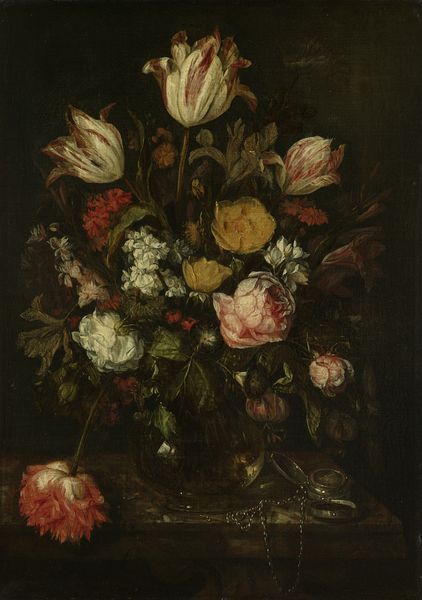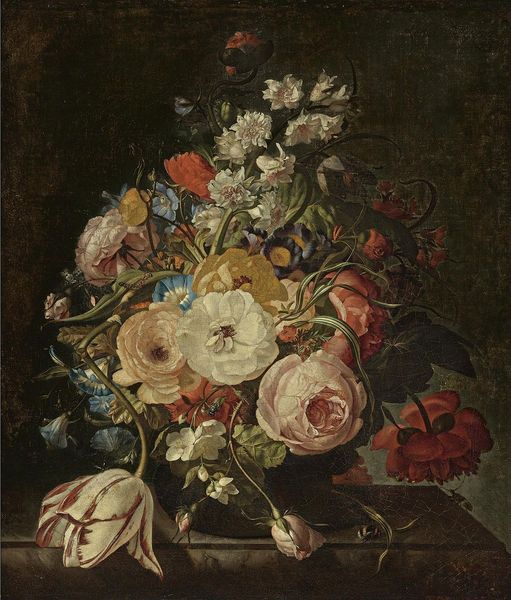
painting, oil-paint
#
baroque
#
painting
#
oil-paint
#
oil painting
Dimensions: overall: 74.9 x 61.5 cm (29 1/2 x 24 3/16 in.) framed: 99 x 83.8 x 9.5 cm (39 x 33 x 3 3/4 in.)
Copyright: National Gallery of Art: CC0 1.0
Editor: Here we have "Flowers in a Classical Vase" painted in the late 17th century, artist unknown. It's an oil painting and there is such a riot of colours and different textures, making it feel quite abundant, but with an element of decay hinted at. What catches your eye about this piece? Curator: It's fascinating to consider the oil paint itself. Pigments derived from minerals and plants, painstakingly ground and mixed with oil, all pointing to an elaborate process and skilled labor, ultimately consumed to create an image representing luxury and… nature, or rather, a very constructed idea of it. Editor: Constructed, how so? Curator: Well, look at the variety of flowers. Are they all in season at the same time? Probably not. So we have an artist, likely working to commission, creating a fabrication – a deliberate display of wealth and access through manipulating these natural resources and materials. Editor: So the painting itself becomes a kind of commodity? Curator: Exactly. The consumption isn’t just the purchase of the painting; it’s the acquisition of all the labor and resources required to produce it – the mining of the pigments, the skilled work of the artist and the craftsman who likely made the vase, the global trade routes that brought these flowers or knowledge of them together. All of these layers embedded in the finished product on display. Editor: I hadn't considered it that way. Seeing the painting as an end result of different means of production. Curator: Precisely. Thinking about the materials helps us move beyond the aesthetic beauty, and to look at the systems that produce this kind of beauty. Editor: Thanks, I will definitely be more aware of production and resources in future when studying similar works!
Comments
No comments
Be the first to comment and join the conversation on the ultimate creative platform.
